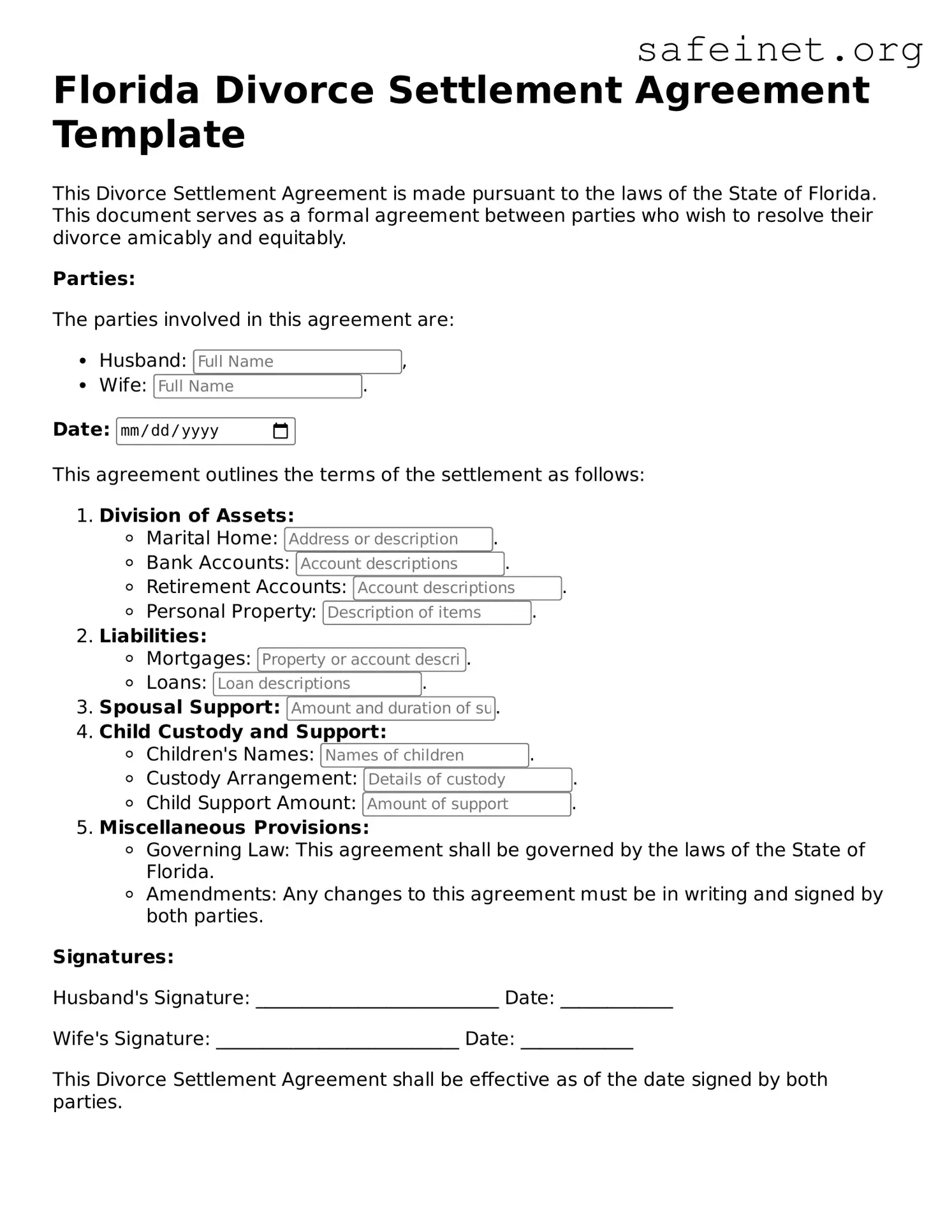What is a Florida Divorce Settlement Agreement?
A Florida Divorce Settlement Agreement is a legal document that outlines the terms of a divorce between two parties. It typically covers issues such as the division of assets and debts, child custody, child support, and alimony. This agreement serves as a roadmap for resolving disputes amicably without the need for prolonged court battles. Both parties must agree on the terms for the document to be valid.
How do I create a Divorce Settlement Agreement in Florida?
To create a Divorce Settlement Agreement, begin by discussing the key issues with your spouse. Consider using a mediation service if direct conversation proves challenging. Once you agree on the terms, you can draft the agreement. It is advisable to use a template or seek assistance from a legal professional to ensure that all necessary components are included. Review the agreement together to confirm understanding and agreement before submitting it for court approval.
Is a Divorce Settlement Agreement legally binding in Florida?
Yes, a Divorce Settlement Agreement becomes legally binding once both parties sign it and the court approves it. After approval, the terms outlined in the agreement enforce obligations regarding asset distribution, custody arrangements, and support payments. Should either party fail to adhere to these terms, the other party can seek enforcement through the court.
Can I modify a Divorce Settlement Agreement after it has been signed?
Modification of a Divorce Settlement Agreement is possible but typically requires good reason. Life changes such as job loss, relocation, or changes in child needs may prompt modifications. To legally modify the agreement, both parties must consent to the changes. A new document or amendment may need to be filed with the court to ensure the modifications are enforceable.
What should I include in my Divorce Settlement Agreement?
Your Divorce Settlement Agreement should comprehensively address all pertinent issues related to your divorce. Important inclusions are the division of property and debts, child custody arrangements (including visitation), child support amounts, and any spousal support (alimony). Additionally, it’s wise to establish how future disputes will be resolved. Ensuring clarity on these matters will help prevent misunderstandings.
Do I need a lawyer to help with a Divorce Settlement Agreement in Florida?
While it is not mandatory to hire a lawyer, seeking legal advice is highly recommended. A lawyer can provide essential guidance, ensure that your rights are protected, and help clarify complex legal language. If both parties agree and understand the terms, they may proceed without legal representation, but consider the potential long-term consequences carefully. Legal services can be a safeguard against possible complications down the line.
